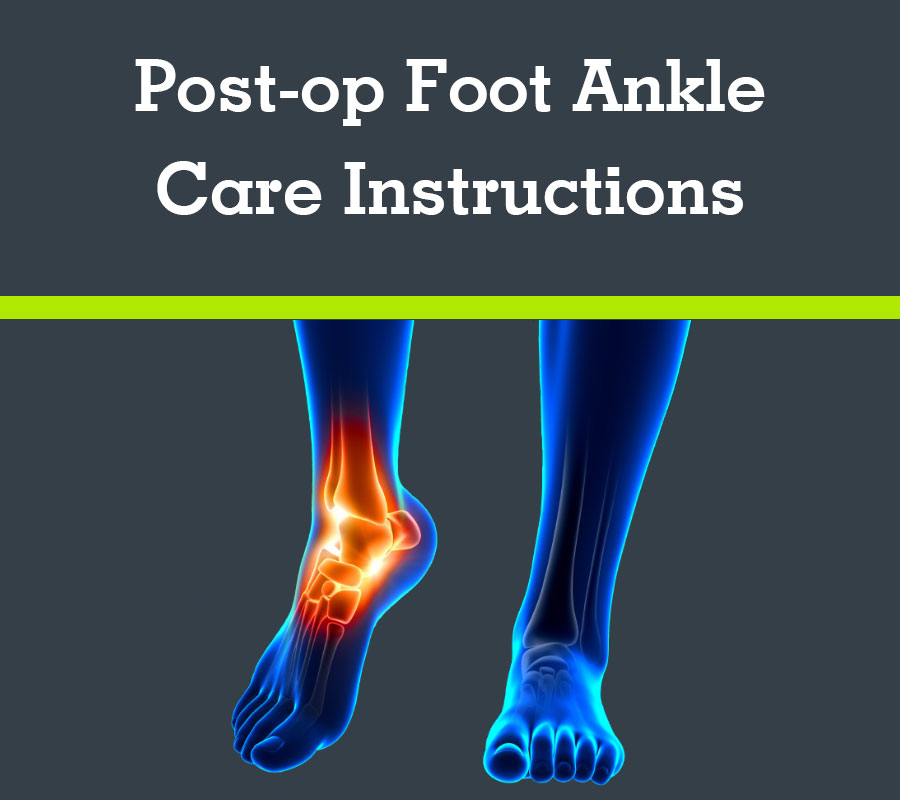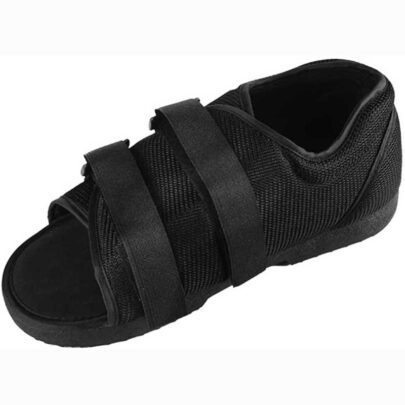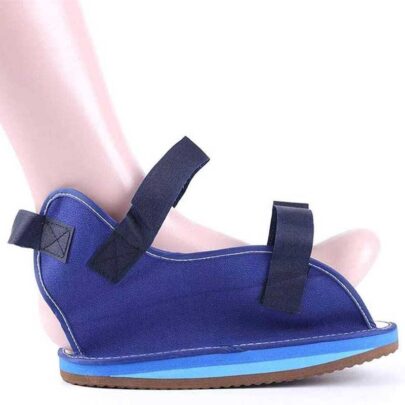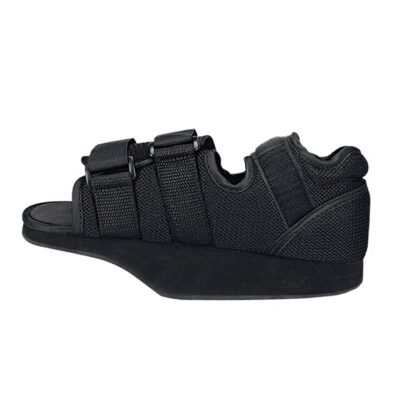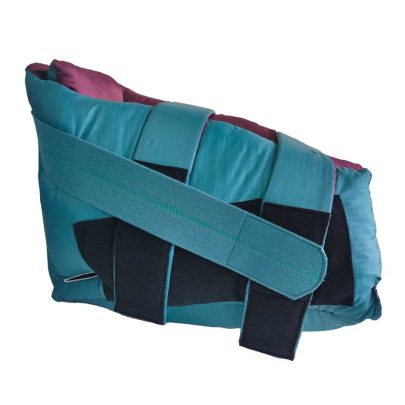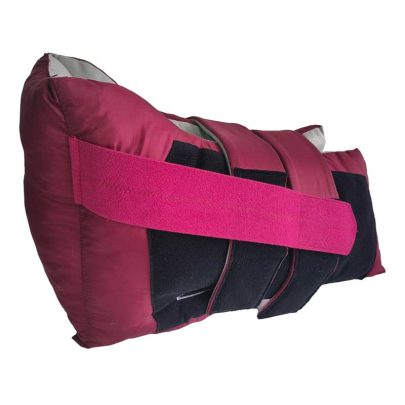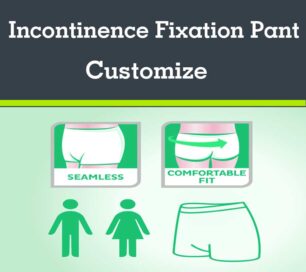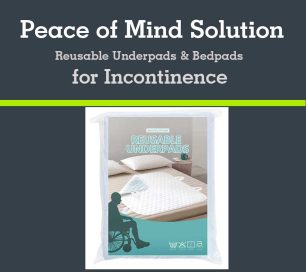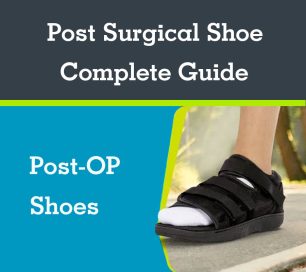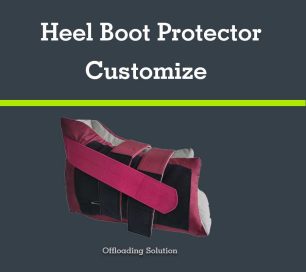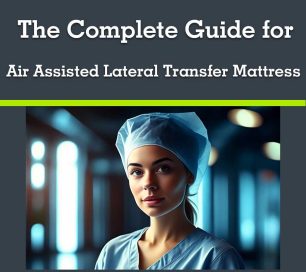Last Updated on 3 years by admin
Metacare is a manufacturer and supplier in China, our company provides effective recovery products and solution which reduces swelling and pain and accelerate the healing process of recovery from foot surgery.
Yes, it’s right, we just talk about the footwear solution here and if you want to know all things you need to know after foot surgery, you can read the blog “General Guidelines to Post-Operative Foot Care” here, or you may like to know “Broken Toe Walking Boot for Fractures & Foot Injury Recovery”
FOOTWEAR
You may need to wear a postoperative shoe or boot. You will need to continue to wear it until otherwise directed. On your “good” foot, wear a shoe that is low-heeled, fits you well, and gives you good support, preferably not strapless sandals or flip-flops.
Post-op Cast Shoes
Overview: Purpose Of A Walking Cast Shoes
Cast Shoes replace the patient’s regular shoes following foot, ankle, or toe surgery. The medical shoe ensures the foot is comfortable and protected during rehabilitation. Walking with an unprotected foot can be painful and leave the foot vulnerable if bumped.
Protecting the foot post-op encourages ambulation. Walking improves blood circulation to oxygenate the tissues for faster healing. Walking also prevents bone loss.
Patients with a hard plaster cast wear this Post Op Cast Shoe to match the height of the opposing foot in a regular shoe. The rocker sole maintains a natural walking gait to prevent strain to other joints from overcompensation. It also keeps the cast clean when walking outdoors.
Commonly referred to as cast sandals, the lightweight shoe features an open-toe-box design with hook and loop straps. An open-toe is necessary for patients recovering from bunion or hammertoe surgery, removing any pressure on sensitive toes. The straps make donning and doffing simple. Although some post-op shoes are lace-up, the majority are secure with hook-and-loop closures. The adjustable straps allow the foot to position into the shoe from the top without putting pressure on the toes or ankle joint.
Forefoot Off-Loading Shoe | Non-Weight Bearing Boot for Toe Protection after Surgery
When to Use the Forefoot Off-Loading Shoe
There are a number of conditions that require limited or no weight bearing on the front of your foot for treatment. While using crutches can get the job done, they can be a major nuisance and result in your muscles wasting away in the meantime. In some cases, wearing a wedge orthotic such as this medical shoe is a preferable alternative to crutches.
Clinical evidence shows the Forefoot Off-Loading Shoe significantly reduces weight-bearing pressure on your forefoot and toes, promoting faster healing after surgery or trauma.
The Healing Shoe is compatible with Darco Peg Assist Pressure Relief Insoles. Used alone, the lowers forefoot pressure by as much as 57%, but clinical studies have shown pressure reduction by as much as 75% under your big toe. When combined with Darco’s innovative Peg-Assist insole you can achieve even greater customizable, localized-pressure relief.
The key element that sets this bunion surgery shoe apart from other post-surgery boots or shoes is its 15° Dorsi-angle bottom. This forces you to shift your weight to your heel when walking. The lack of pressure on the front of your sole reduces foot and toe pain and gives the injured area a chance to heal correctly. See BraceAbility’s full line of braces for foot conditions.
This lightweight and low-profile post-surgery boot can help with the number of foot and toe conditions, including:
- Diabetic foot ulcers
- Bunions (hallux valgus) or after a bunionectomy
- Mallet, claw, or hammer toe post-op recovery
- Infection
- Plantar corns removal
- Broken toes or forefoot fractures (including Lisfranc fractures)
- Ball of foot pain from trauma to metatarsalgia
- Morton’s neuroma
Avoid further injury—preventing knee, hip, and back pain—due to leg length discrepancy when wearing a medical shoe with the Even up Shoe Balancer. The Even up is the easy way to “even up” leg length from your hip to the sole of your foot, making walking with a shoe safe and pain-free.
5 Advantages of This Heel Walking Boot for Diabetic Foot Ulcer Treatment
- Wide Footbed and Square-Toe Design – This orthopedic forefoot off-loading shoe has a wide footbed and square-toe design, which acts as a bumper to provide extra protection and prevent your toes, especially your pinky and big toe, from rubbing against the brace or some other surface. It can be worn on your right or left foot thanks to its squared footbed.
- Comfortable Padding and EVA Foam Insole – Padded lining along the inner portion of the shoe is soft against your skin as well as durable. A lightweight, EVA (Ethylene Vinyl Acetate) foam insole makes this toe fracture sandal comfortable for extended periods of use. The durable foam consists of thousands of bubbles filled with gas, making the material lightweight, flexible, and shock-absorbing.
- Non-Skid Tread Enhances Safety and Protection – Traction tread at the bottom of this stiff-soled offloading shoe is a smart feature both in terms of user comfort and safety. The non-slip traction grooves provide extra stability and protection while walking, making movement easier and safer to prevent re-injury.
- Adjustable Fasteners Easily Accommodate a Swollen or Bandaged Foot – Adjustable fasteners help accommodate post-surgical bulk, bandaging, and swelling after sustaining a foot or toe injury. Immediately after surgery, you will need more space due to swelling and dressings. Once swelling and inflammation have subsided and bandaging has been removed, you can tighten the fasteners.Another bonus of this short bunionectomy boot is that the fasteners are much stronger than most. That is because they are medical-grade, meaning they are ten times stronger than the retail-grade fastener you’ll find on braces at CVS, Walgreens, or your local drugstore.
- Low-Profile and Lightweight Fit – A semi-open style and airflow-friendly material make this post-op Orthowedge shoe breathable for all-day comfort. Designed with healing and user comfort in mind, this forefoot offloading shoe has a relatively low-profile fit, allowing users to remain active and independent throughout the recovery process.
Heel Offloading Boot
Offloading boots provide pressure redistribution for patients that are at risk for diabetic foot conditions.
Take a load off with our Heel Offloading Boots, with a variety of boots to meet different needs in your patient population.
Historically, a common approach to floating a patient’s heels has been to place pillows under the lower leg and position them so there is no pressure on the Achilles tendon and the heel. Unfortunately, this method has always had a frequent problem.
After positioning the patient, the chances that they’ll remain perfectly still once you’re gone are very low since patients naturally move and reposition themselves for comfort. Repositioning can often leave your patients vulnerable to the forces of friction, shear, and pressure on their heels.
Offloading heel protector in the healthcare market today, providing the ultimate protection against heel pressure injuries and foot drop and featuring an internal foam wedge to maintain heel offloading. The interior, soft micro-suede fabric coupled with high sides wrap around the leg to maintain correct foot placement, with an adjustable “Y” strap that keeps the foot at a 90-degree angle to prevent foot drop. Two wide tube holes on each side of the Boot allow for routing pressure-causing SCD tubes away from the skin and durable outer fabric repels fluid and slides easily to prevent skin shearing. The boot can be wiped down with disinfectant wipes and are machine washable. PrimoBoot is available in a variety of sizes to accommodate different calf measurements. An optional anti-rotational wedge is available to aid in the prevention of internal/external rotation of the leg.
This is where Heel Offloading Boots come into play, providing the support and pressure redistribution that patients need!
Contact US For Customized service
Frequently Asked Questions About This Medical Shoe After Bunion Surgery
What conditions / injuries does this post-op shoe treat?
Perfect for use following toe and foot surgery or injuries including diabetic foot ulcers, broken toes, hairline stress fractures, post-op bunion removal (bunionectomy), after hammertoe surgery, Lisfranc fractures, toe sprains or strains, bruised forefoot bones, metatarsal breaks, Morton’s neuroma, metatarsalgia, and general ball of foot pain.
How does it work?
This ortho wedge shoe is designed to reduce weight-bearing pressure on your forefoot and toes, promoting faster healing after surgery, trauma, or when forefoot wounds or ulcerations are present.
Who can wear this brace?
Available in sizes ranging from small to XL, fitting a wide variety of adult women and men, as well as teenagers and youth.
Will this fit my child?
Certain sizes will fit kids. See our size chart for specifics.
When should I wear it?
This toe brace can be worn throughout the day for post-op support and forefoot protection. Ask your doctor before wearing this shoe while sleeping.
What is it made of?
This broken metatarsal treatment brace is made of a hard rubber sole, EVA foam insole, polyester lining, and medical-grade fastener.
Can I drive while wearing it?
It is not recommended to use while driving if the shoe is being worn on your driving foot.
How do I put it on?
With the straps undone, place your affected foot inside the shoe. The forefoot strap is adjustable. Remove and reattach to accommodate bandaging. Feed the top strap through the D-ring. Wrap the top strap across your foot and attach the fastener.
Can I wear it on either foot?
This walking cast shoe is universal, so it will fit your right or left foot.
Washing Instructions:
Close fasteners and hand wash in warm water with mild detergent. Air dry.
Other features:
- The non-skid tread provides extra stability while walking.
- Wide, square toe design acts as a buffer for protection.
- Do you need targeted offloading? Add a Peg-Assist Insole.

